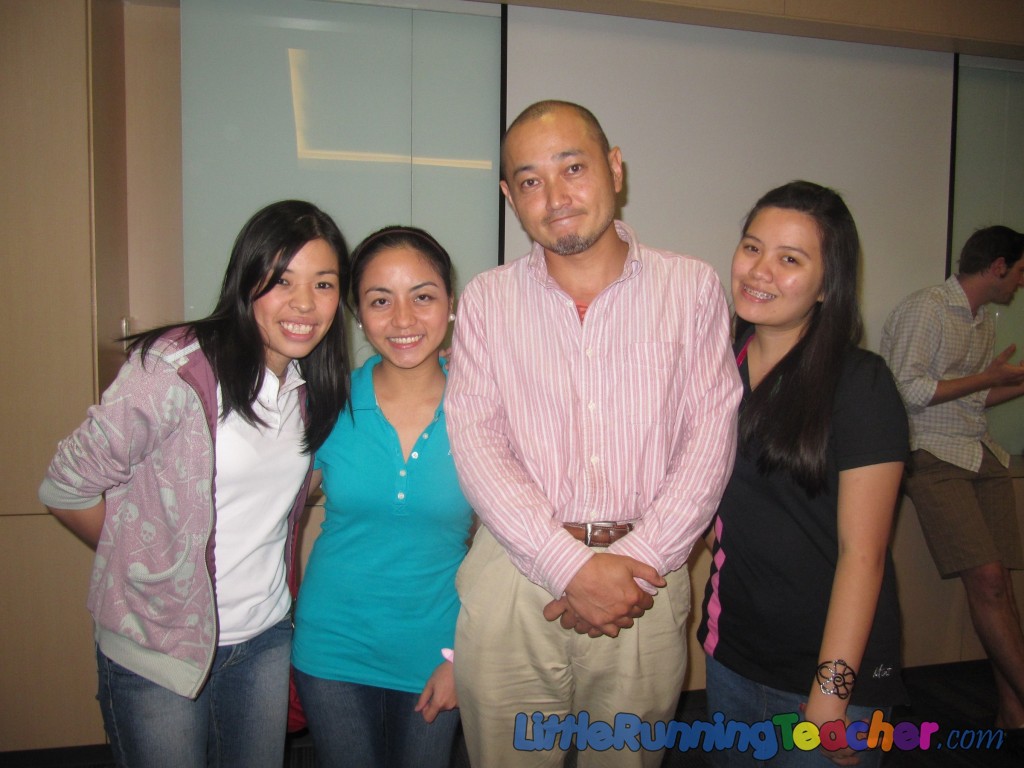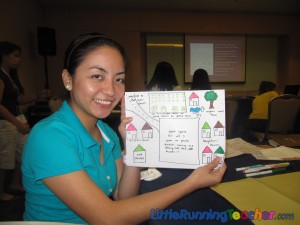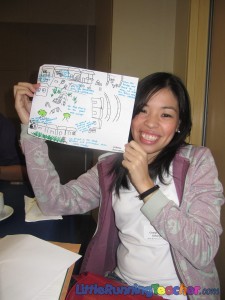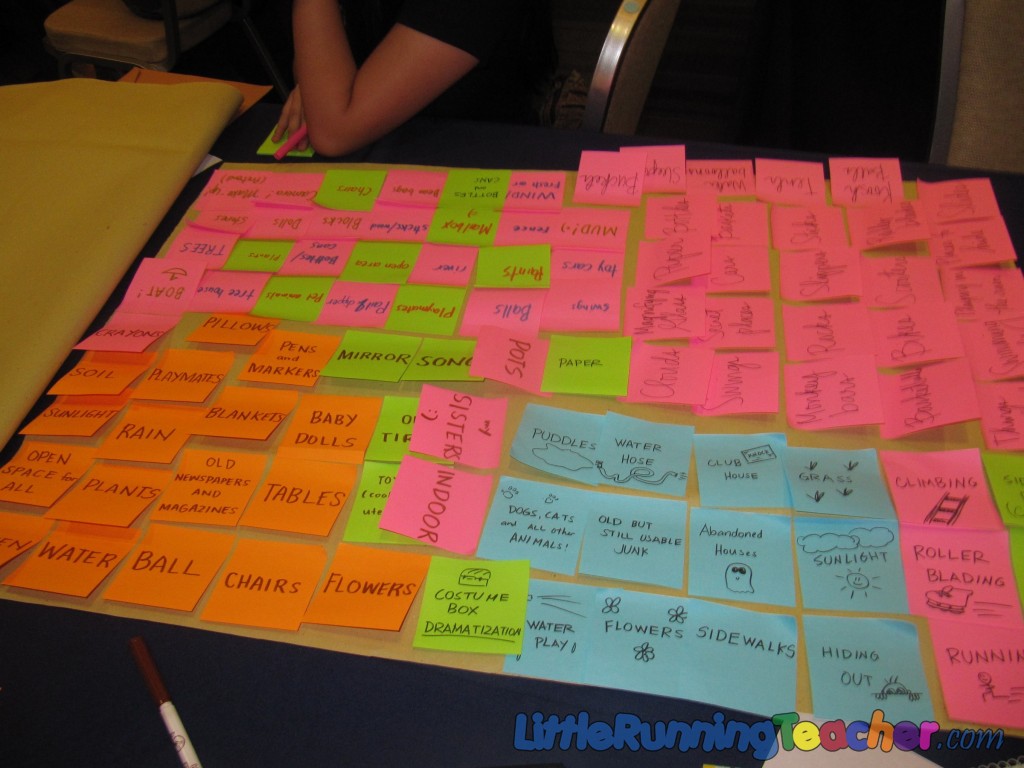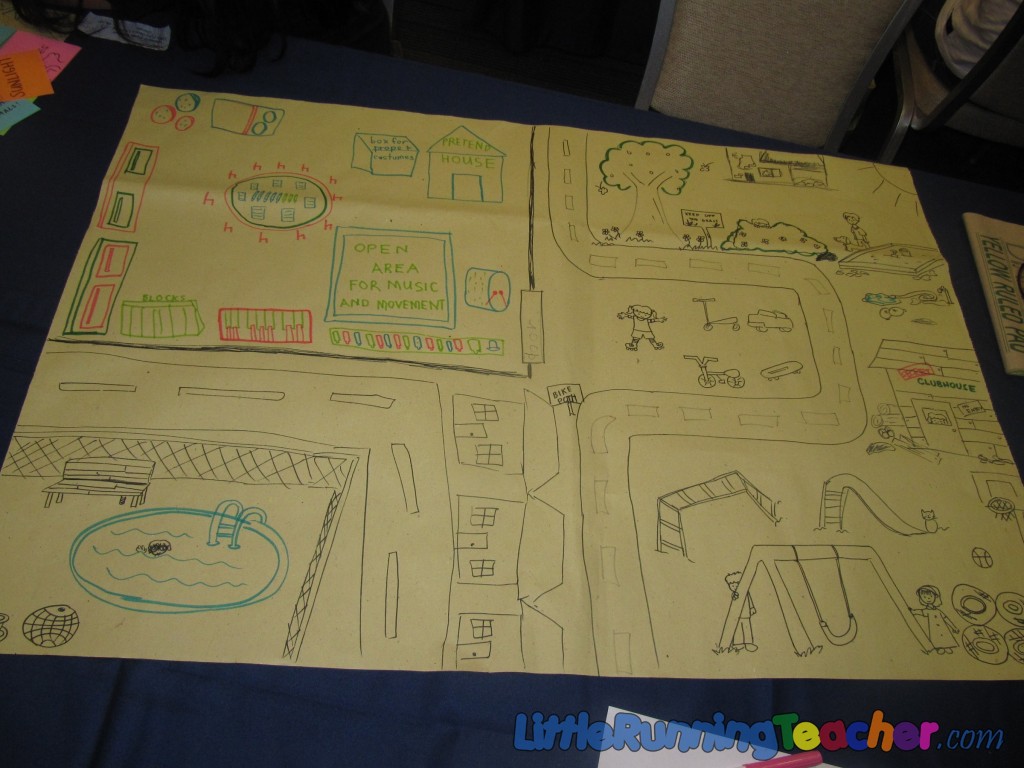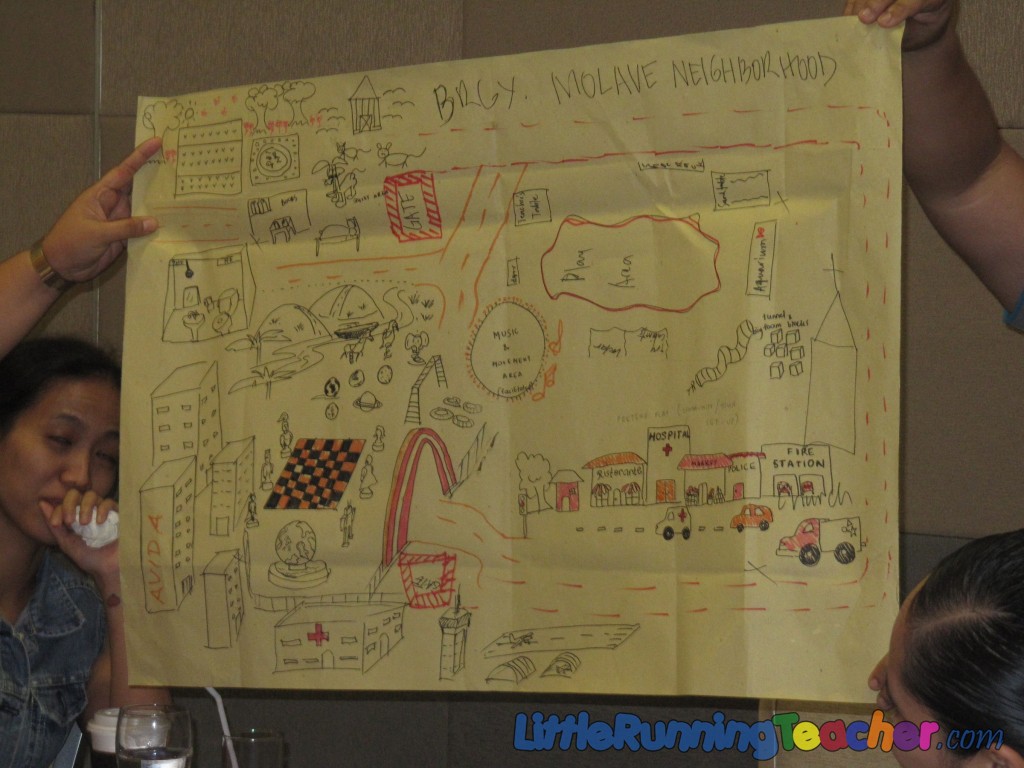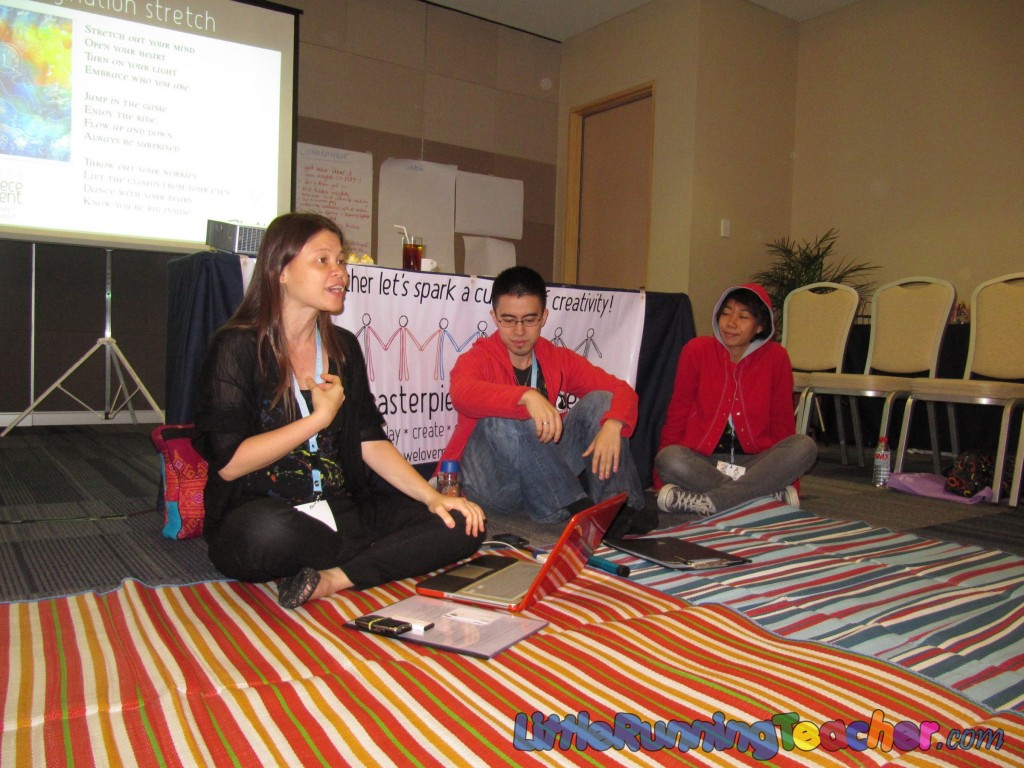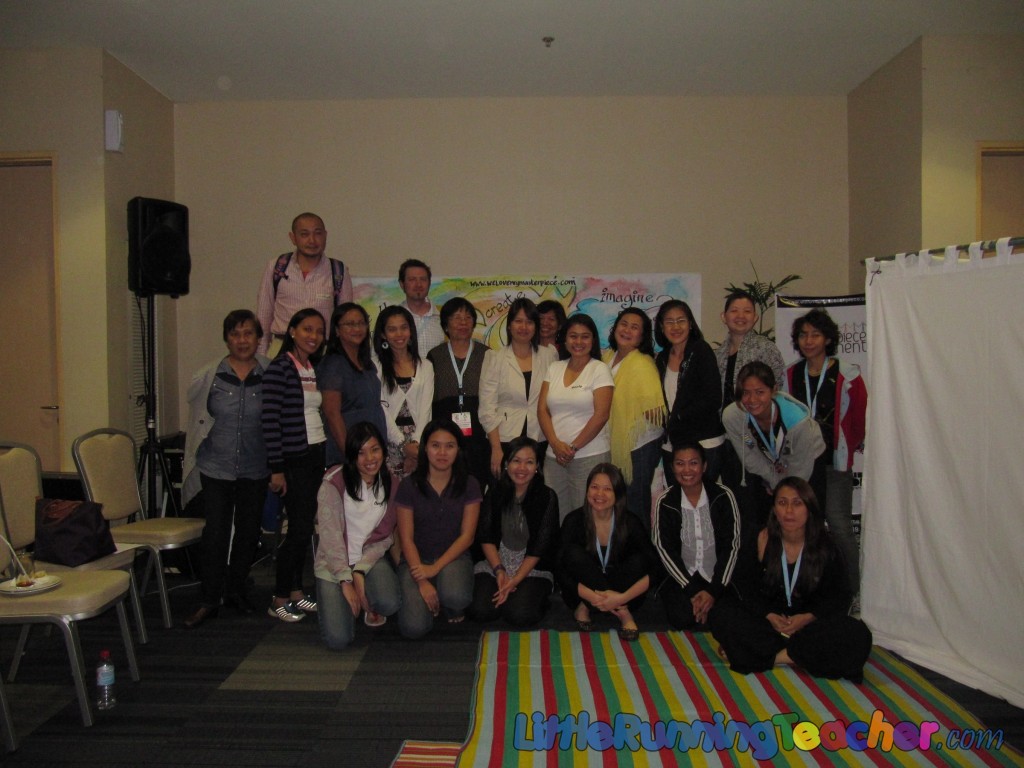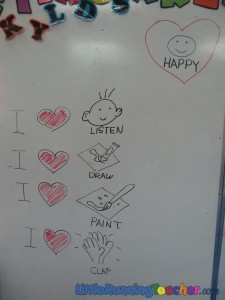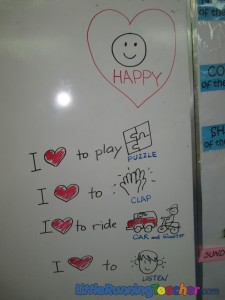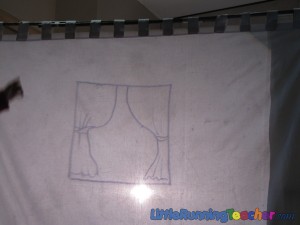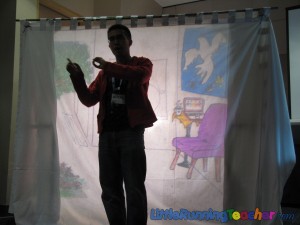Last week, Play Pilipinas had their first ever festival on children’s play here in the Philippines. I had already heard about it since several months ago but was hesitant to register due to lack of funds. However, during the last minute, I realized that anything that would add to my knowledge of children and early childhood education would surely not be a waste. Basically, there would be 4-6 seminars/ workshops all on the same time slot. You’d have to pick which one you wanted and register for it. If they were only on different time slots, I BADLY wanted to attend all of them. Anyway, I quickly picked 2 workshops -one in the morning and another in the afternoon.
–
Creating an Inspiring Play Space by Hitoshi Shimamura
I picked this workshop because I was informed that we would be taught something that was not yet applied in the country. This immediately caught my attention. I figured, I can learn the other stuff on another time or from someone else since it is applied here. This workshop however is foreign and new.. I bet I’d learn much more here -and I did.
–
Hitoshi has been a Japanese play worker since 1996. In the recent earthquake and tsunami incident in Japan, he used play top help kids cope from the trauma of the disasters.
–
What is a Play worker?
A play worker is a community worker working for and with children. To maximize the opportunity to play, a play worker works with parents, neighbors, schools, nurseries, local authorities and industries. When I asked Mr. Hitoshi how one can become a play worker, he first explained to me how there are no play working groups yet in the Philippines but that I can always learn more about it by reading various articles online. He then proceeded to tell me that being a preschool teacher is technically also like being a play worker. We play with kids day in and day out, using play as a tool for them to learn and develop.
It’s ironic to think that play comes so easily and naturally for kids and yet we adults spend hours and days analyzing it.
–
So anyway, one of the objective of today’s workshop was for us to be able to create our own inspiring play space. I first though to myself, “again?” I had already created several play spaces for college projects or for our classroom setup and thought I would just be doing the same thing. Though the idea was similar, the process was different. I never thought of doing it in the manner Mr. Hitoshi had thought us.
–
First and foremost, he told us NOT TO START WITH NOUNS. When people decide on what they want for a play area, we usually say, “I want a slide, I want some monkey bars, etc.” We give random nouns and say random things because we think that this is what any play area needs. We think that since society has already been doing it for several years, we might as well stick with it. Well, we’re not entirely wrong in doing so, but there’s a better way to go about it. So instead of saying the things you think you want, say what you want the kids to be able to do. For example, instead of saying “I want a book area”, say, “I want the children to be able to read”. Using the verbs make it a little broader so instead of just sticking with one thing, you are able to expand your imagination and come up with a variety of materials that may be used to achieve this goal.
–
Play is a game. When you think of games, it’s rarely the name of the game that first pops into mind… rather it’s what you did and how you played it. The same applies to creating the play space. Don’t think of the equipment, think first of what you want the children to experience.
–
During the workshop, Mr. Hitoshi grouped us into 4 and had us first start off by drawing our own MAPS. He made us remember how our play space was growing up. Funny thing was, almost no one answered PLAYGROUND. The answers ranged from flooded streets to abandoned houses! All of the unimaginable became our play spaces as children.
–
Then, he had us fill up these pieces of paper. Written on these papers were titles such as “Funniest Moments”, “Most Adventurous”, “Most Heartwarming”, “Best Kept Secret” etc. He then had us try and recall moments in our childhood when we experienced these and had us write it down on the papers. You see, it’s easier to create an ideal play space if you first remember what you experienced when you were young.
–
After we were done, he then handed us a bunch of post-its and had us write down what we thought a play area should based on that we wrote on the sheets of paper.
And lastly, he had us put our writings into drawing on a huge Manila paper. Most of the items on our map were similar to most play spaces, only this time, we created something based from inspiration. We created the play space because of experiences we wanted the children to have and not simply because we thought a specific equipment should be placed there.
–
Bottom line, a play space includes everything around and not just one classroom in your school. Create the play space based on experiences and inspiration. Recall your own childhood and start by drawing a map!
–
–
The Play Mindset: Creating a Class Atmosphere of Play by My Masterpiece Movement
Our words are more powerful than we ever imagined them to be. Teacher Anna began this workshop by explaining how powerful our words our. She continued by reminding us how we are all an extraordinary masterpiece and that the only one holding us back from becoming that is ourselves.
–
We our like a bottled glass of water. We’re filled up with worries, concerns, deadlines, etc. We hold that glass bottle in our hands, afraid that it might spill over. However, whenever we step into class, or simple when we wake up each morning, we should put down that glass of water and leave it aside. Leaving it aside is not forgetting it. It’s still there. We are just choosing to deal with it on a different time in order for us to be free to do everything on that day. Then again, we can’t just leave it forever. We have to deal with it slowly and carefully until it’s all gone.
–
Now kids have A LOT of energy. There’s no doubt about that! As teachers, it can often be frustrating when we try to lead them towards a particular direction and yet all they want to do is run around and play. Although we try to be as open minded and open ended as possible, we still have a lesson to teach right? My Masterpiece Movement shared a few tips to help keep the class a little more organized while also boosting the children’s creativity and imagination.
–
1. Breathe. It’s something we do everyday but do we really understand how important it is? When the 8-year old girl I tutor gets frustrated, she would often tell me that she needs to breathe. I know the routine, and I know that when people need a break, they need to breathe. But I never really put much thought into it. I never really analyzed how much help breathing can really do in stressful situations. In class, do we really teach our kids how to breathe? Do we REALLY just tell them to relax and count to ten to help them calm down? Or do we simply tell them what they need to do – “Sit down!” “Keep quiet!” I bet we all wanted to just let them relax but often end up just telling them what to do.
I recently tried doing this with one student who was SUPER frustrated because it wasn’t her turn to do an activity that day. I let her breathe in and out and we counted to 10 together ’till she felt better. Sooner than you know it, she was joining the class and having fun once again.
–
2. Have agreements. We always have our classroom RULES, but the word RULES feels negative. It automatically gives children the impression that you are telling them to do or not to do something. Instead of using the word RULES, why not come up with AGREEMENTS? In an agreement, both parties like what is discussed and both parties contributed to coming up with it.
–
The week after the seminar, I immediately tried implementing this in class. Instead of just telling the kids what to do, I’d ask them.. “How do you want us to feel today?” Day in and day out, they would answer. “HAPPY DAY!” and then I would proceed by asking them what we could do today to make it a happy day. Sometimes, they would answer, “Paint!” and I’d agree BUT they have to listen to my story too. We both learned to compromise and give in to each other. I was no longer the only person in charge. We were all in an agreement.
–
Besides all these, My Masterpiece Movement also emphasized how a change in PERSPECTIVE can lead to big changes. A perspective refers to the way we see things. Having a perspective on something does not mean you’re right, but it doesn’t mean you’re wrong either. We can somehow say that when we see things in a certain perspective, it causes us to assume. The thing is, assumptions are not facts. They are not solid nor entirely true… but they feel right to us because we’ve had these assumptions since we were young… and so they become real. Sometimes, we have to accept that a view is JUST a view.
–
To further explain this, the group showed us a drawing of a square. We were all looking at one picture… but we all shouted different things. Some said square, some said table, I said box, etc. Moving forward, curtains were drawn and it became a window. But then again, the window can be inside or outside.
–
To cut the story short, we were all looking at one picture and yet we had different views and perspectives. Now, I can try my best to explain what the group taught us that day, but it would be much better if you could check them out yourselves! :) Trust me, there’s SO MUCH more to learn! This isn’t even half of it! The group teaches you not only about art and creativity, but a new perspective to life in general! It’s open to all ages from 1-99! So go check them out now!
–
For workshop schedules, check out their website at: http://www.welovemymasterpiece.com/
–
and for updates on the next Play Pilipinas, be sure to add them up on Facebook https://www.facebook.com/playpilipinas.org


